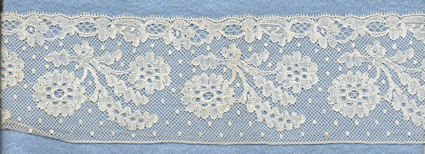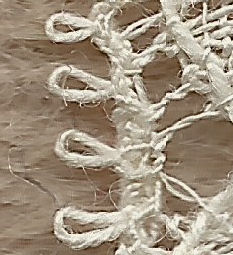
Flowery machine lace edging
This is a good imitation of bobbin lace, but various parts are made in a different way, which shows that is is machine lace.
Scroll to bottom of page for further explanation (or click here).
This lace came from my aunt Margaret Packe (nee Drake). She said that the older pieces came from her grandmother, Ellen Buchanan (nee Barwise) born 1868.











